Last-Minute NYC Holiday Gift Guide 🎁
We’ve created a holiday gift guide with presents for the intrepid New Yorker that should arrive just in time—


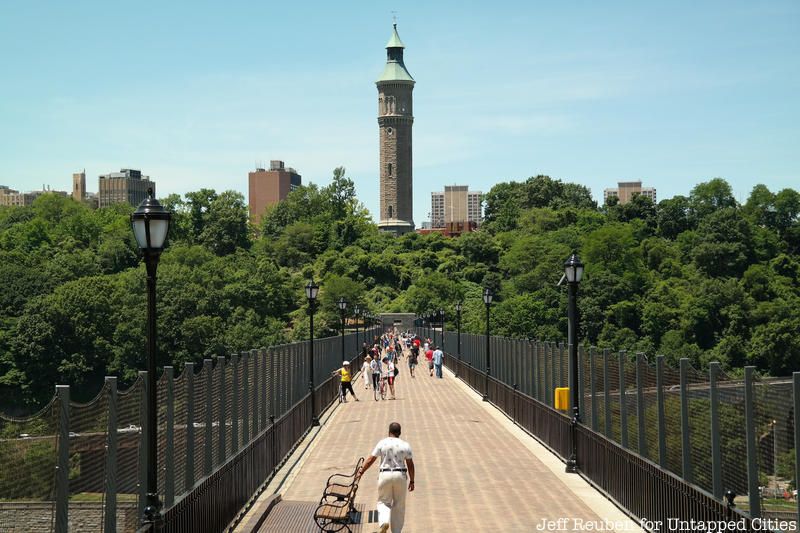
New York City’s oldest standing span, High Bridge, may be one of the most iconic fixtures in Washington Heights, but the park that holds its Manhattan end is similarly as picturesque. Operated by the New York City Department of Parks & Recreation, Highbridge Park occupies 119-acres and sits on banks of the Harlem River, near the northern tip of Manhattan.
Like the span it’s named after, the recreational green space is a popular attraction for New Yorkers and visitors alike. With a history dating back to the mid-1800s, it also happens to harbor a few secrets — many of which remain unknown to locals.
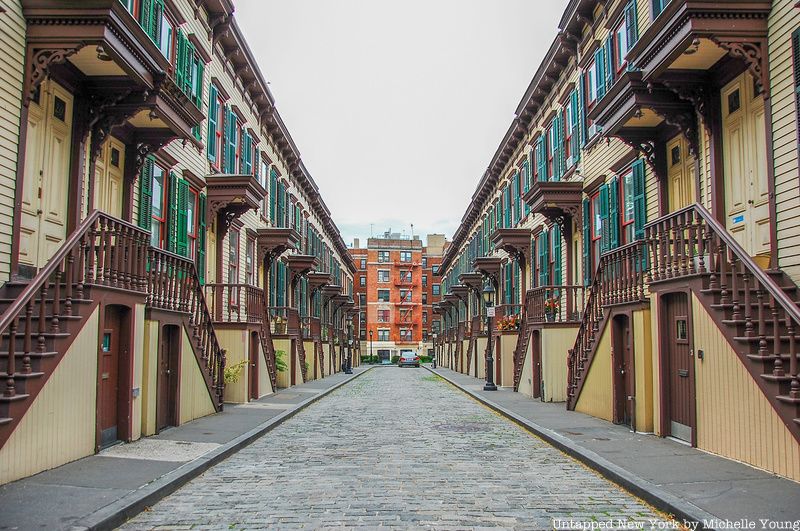
Hidden Gems of Washington Heights
Learn more about Washington Heights and High Bridge Park in our upcoming virtual tour of the neighborhood’s hidden gems!
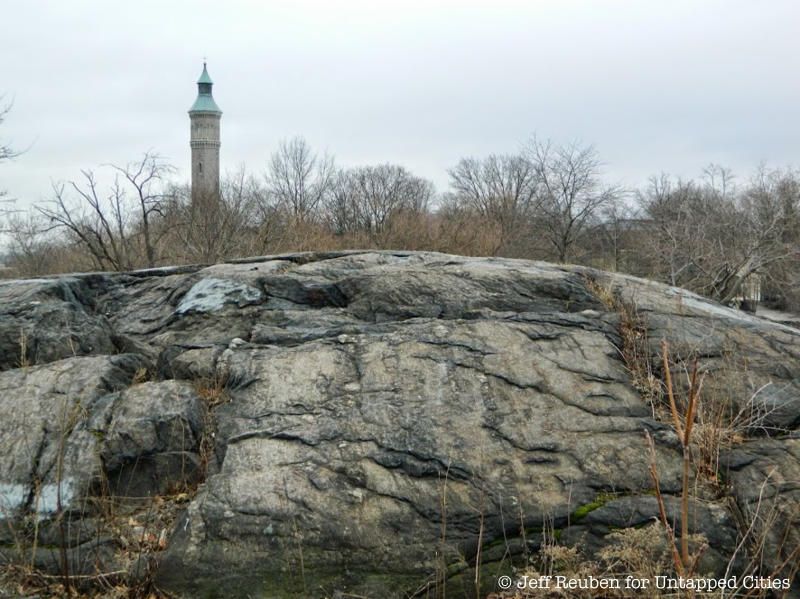
Although much of Manhattan’s natural landscape has been flattened, there are still places to see glacier-carved Manhattan schist — the second oldest of New York City’s bedrocks, formed 450 million years ago.
Next time you visit Highbridge Park, keep an eye out for huge boulders piles and the glittering surface of schist in the approach of High Bridge. You can also check out remnants of the Croton Aqueduct — the 32-mile gateway that brought a steady supply of clean water from Upstate New York to downtown Manhattan.
For more, read about other places you can see Manhattan schist up close.
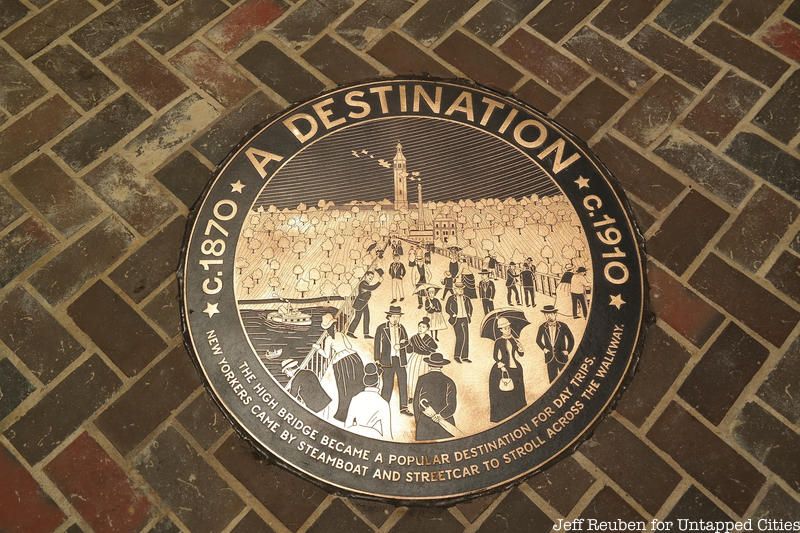
During the late 19th-century, Highbridge Park was home to a recreational site known as Fort George Amusement Park, which stood between 190th and 192nd Streets on Amsterdam Avenue. Regarded by some as “Harlem’s Coney Island,” the attraction opened in 1895, and featured two Ferries Wheels, three roller coasters, a casino, an ice cream parlor, a toboggan slide and two music halls: the Star and the Trocadero.
Today, Fort George Playground stands on the site of the former amusement park, which succumbed to a fire in 1914.
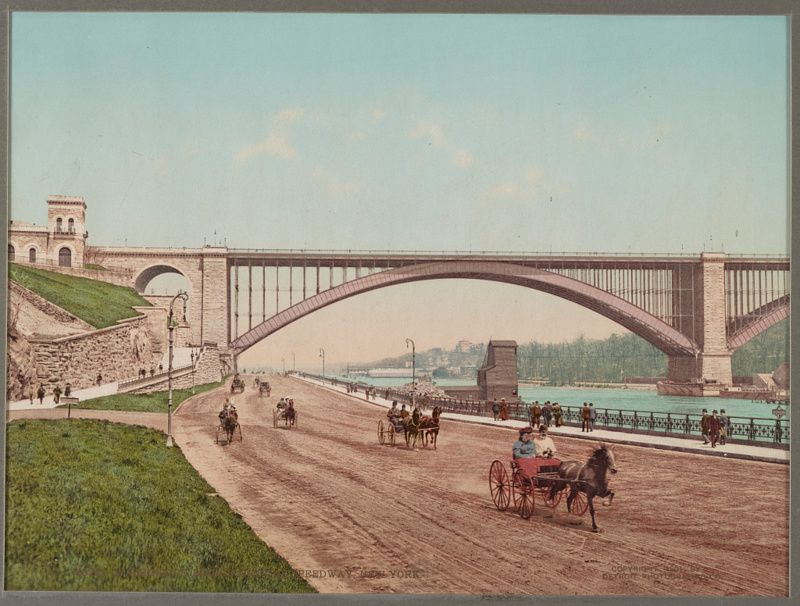
Image via Library of Congress
Built from 1894 to 1898, the Harlem River Speedway was another popular attraction in Upper Manhattan, sitting below Highbridge Park. It ran from West 155th Street to Dyckman Street and was exclusively used for those on horseback or in horse-drawn carriages.
It became a popular tourist attraction soon after opening in July 1898, and visitors could stop to watch carriage races (or boat races on the river). In 1919, motorists were permitted to use the Speedway until it was paved over in 1922; portions of it have now become the Harlem River Drive.
In the dense metropolitan sprawl that typically characterizes Manhattan, it’s surprising to learn that Highbridge Park boasts the city’s first mountain biking course (opened on May 19, 2007), a world class skate park and what the New York City Mountain Bike Association (NYCMTB) regards as some of the “best of the regions trails.”
The selection — though small — includes beginner, intermediate and expert “XC (cross-country) trails,” as well as a pump track, a dirt jump park and the Hellfighter freeride trail, developed in conjunction with pro-rider Jim Dellavalle and the Brooklyn Bike Riders.
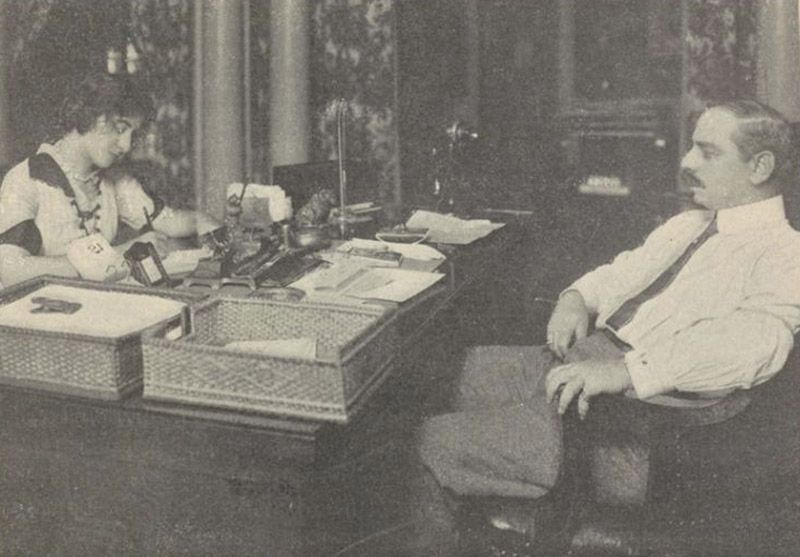
Marcus Loew (to the right) in his office. Image via Wikimedia Commons, New York Public Library
In addition its numerous attractions, Fort George Amusement Park in Highbridge Park was formerly home to a popular beer hall called the “Old Barrel,” where entrepreneur Joseph Schenck sold refreshments. It was at this location that Schenck came to know Marcus Loew, the American business magnate who formed Loew’s Theatres and the Metro-Goldwyn-Mayer film studio (MGM).
The two business-minded men joined forces to build a vaudeville stage in Schenck’s Fort George station before selling the venue to purchased an amusement park in New Jersey, which opened in 1910.
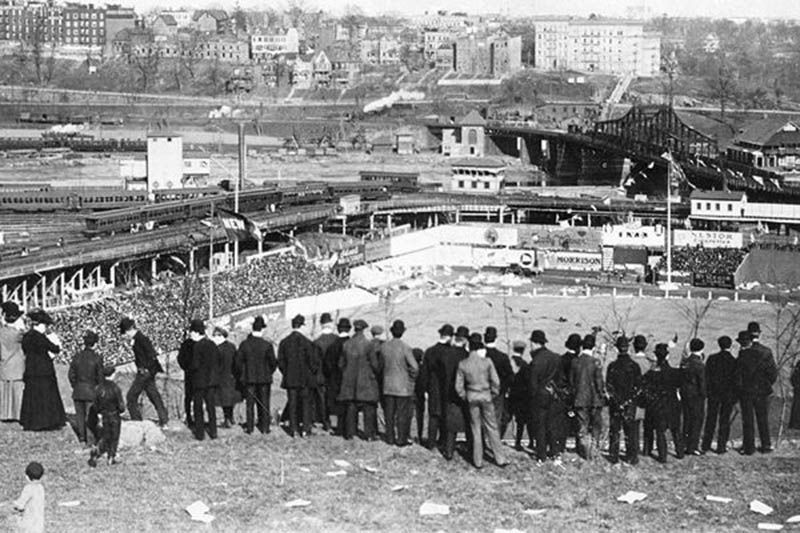
Fans on Coogan’s Bluff watch the Merkle’s Boner game, described as “the most controversial game in baseball history” which took place on September 23, 1908 between the Giants and Cubs. Image via Wikimedia Commons
Located near the western shore of the Harlem River, Coogan’s Bluff is a promontory noted for its steep slope that descends 175 feet to the river valley below. This unique geological formation creates an area between the bluff and river, known as Coogan’s Hollow, which was once home to the Polo Grounds sports stadium for 83 years.
The name “Polo Grounds” actually refers to three stadiums in Upper Manhattan, but it’s mostly synonymous with the site located in Coogan’s Hollow, which was built in 1890. Formerly known as “Brotherhood Park” and later nicknamed “The Bathtub” (in reference to its distinct shape), it was known for its unusually deep center field.
During the 1962 and 1963 baseball seasons, the site served as the first home to the New York Mets, which was established that same year to replace New York’s departed National League teams: the Brooklyn Dodgers (now the Los Angeles Dodgers) and the New York Giants (now the San Francisco Giants); the latter occupied the grounds from 1925 to 1955, until the team moved to San Francisco prior to the start of the 1958 season.
The stadium was later torn down in 1964 to make room for the Polo Grounds Tower, a public housing project with 1,616 apartments. However, remnants of the site’s former life are not lost: the staircase that once led down to the stadium ticket booth can still be seen.
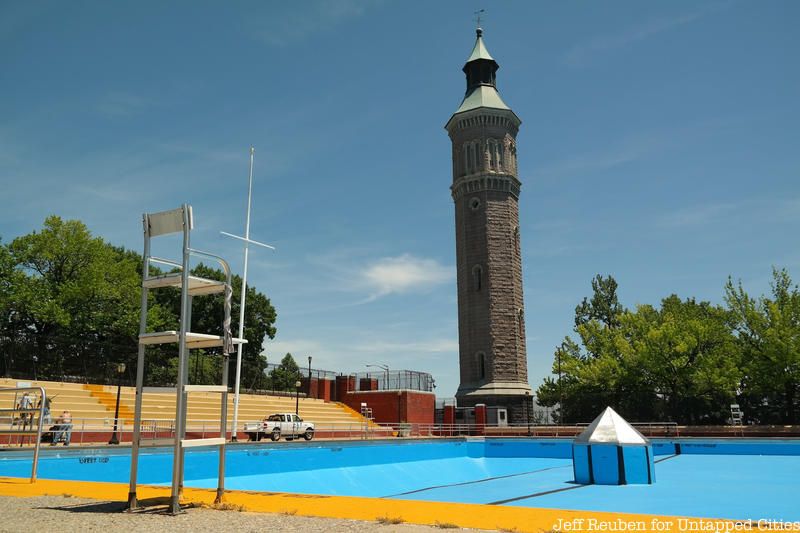
The Highbridge Pool and Recreation Center was the fifth of eleven city pools that were constructed in 1936 under the influence of Parks Commissioner (and avid swimmer) Robert Moses.
When it opened on July 14th, a celebratory swimming and diving exhibition took place with Moses and Mayor Fiorelo LaGuardia both in attendance. The 165-foot by 228-foot pool, which could hold over 4,000 people, was illuminated with underwater lighting and featured new heating, ventilation, electrical and filtering systems; at the time, admission was only 20 cents for adults and 10 cents for children.
Read about 5 things we can blame on Robert Moses and 8 things we can thank him for.
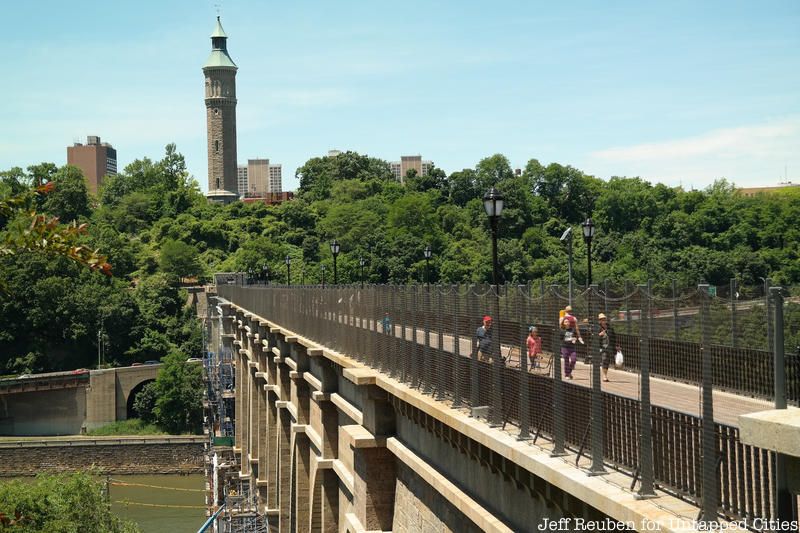
Highbridge Park currently spans 119-acres, but the land that now comprises the green space was assembled piece-by-piece between 1867 and the 1960s — the bulk of which was acquired from 1895 to 1901.
According to NYC Parks and Recreation, the cliffside area from West 181st Street to Dyckman Street was incorporated in 1902, while the parcel including Fort George Hill was acquired over two decades later in 1928.
However, it wasn’t until 1888 that landscape architect Samuel Parsons Jr. and architect/landscape designer Calvert Vaux actually came together to design the park.

Highbridge Park was largely neglected in the mid-1970s, as New York City dealt with a major financial crisis. Large sections of the park were consequently taken over by drug dealers, prostitutes and homeless people, who set up permanent encampments. Only the “most intrepid or foolhardy visitors” would dare to explore the park, which smelled of “fetid mattresses and rank pools of motor oil,” according to The New York Times.
While Highbridge Park has been restored since then, a manual cleanup was carried out during the mid-1980s, which uncovered 250 tons of garbages (and 25 auto wrecks) in the process.
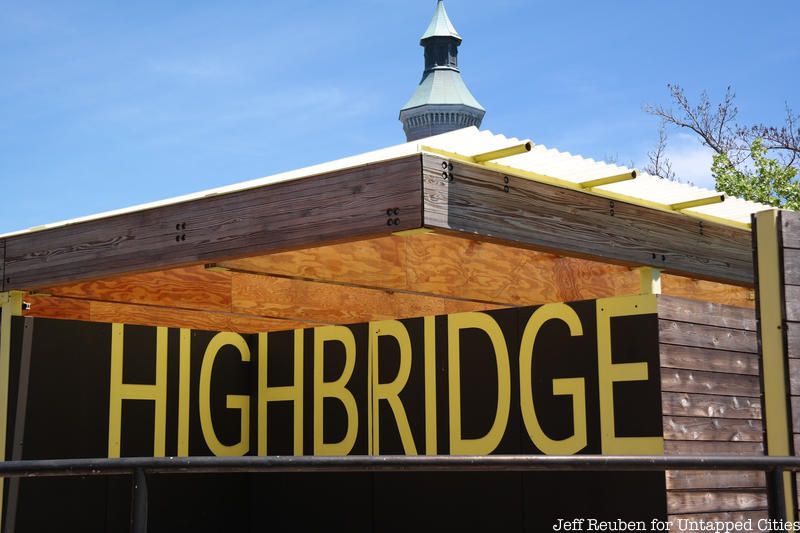
NYC Parks and Recreation makes mention of a monuments shop in Highbridge Park that piques our interest. Although we were not able to find additional details about it, the shop was reportedly located beneath the pool complex for decades.

Hidden Gems of Washington Heights
Read on for the Top 10 Secrets of the High Bridge and 7 Remnants of the Old Croton Aqueduct in NYC.
Subscribe to our newsletter